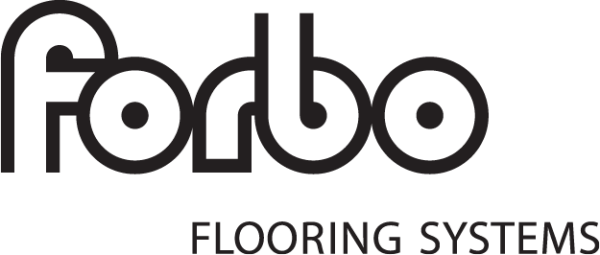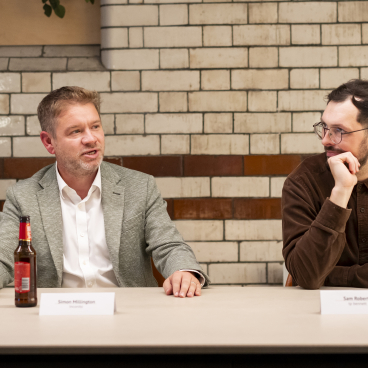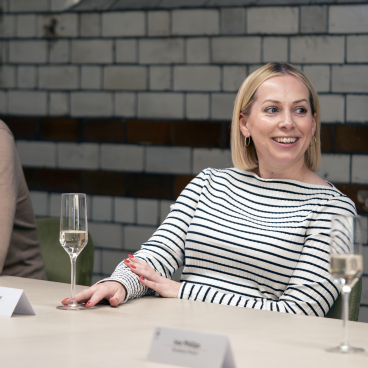How are we embracing tech in the return to workplace?
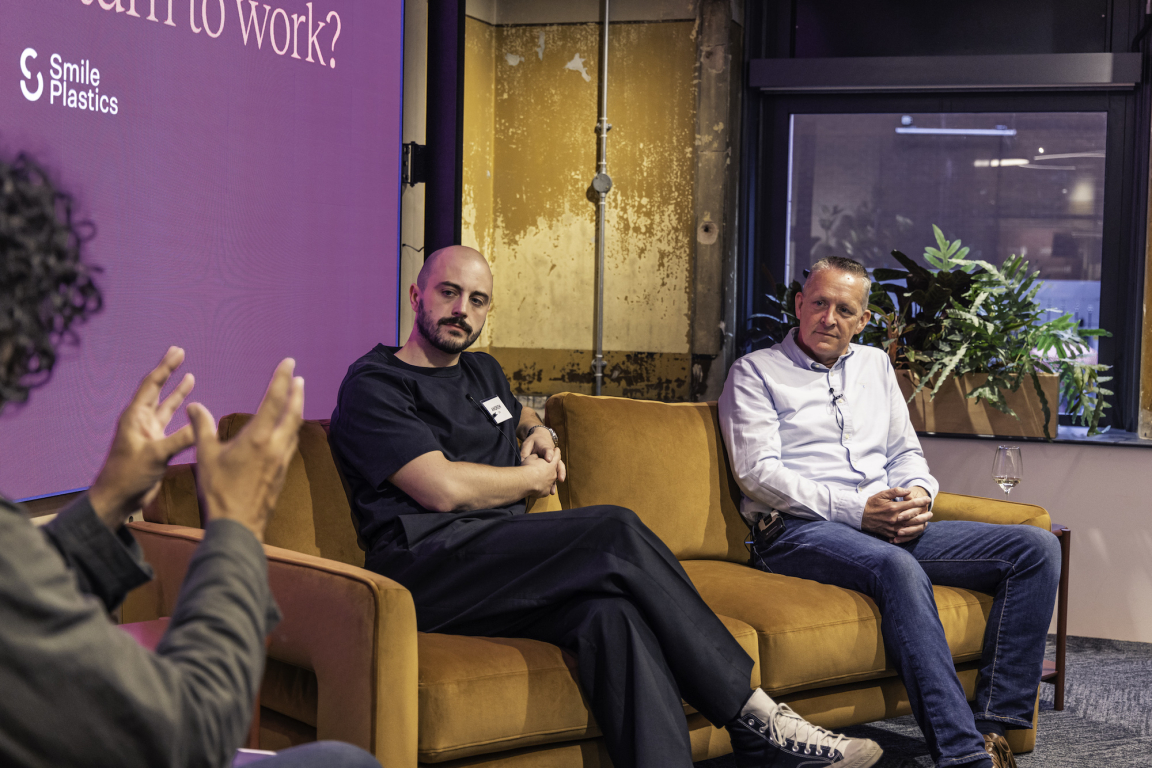
Credit: Tim Ainsworth
Five-years after the pandemic, how have we embraced technology in the return to workplace?
This is the question posed to panellists Keith Feeny, chief technology officer, Hill Dickinson, and Andrew McMillan, project director, Government Property Agency, at our recent, packed out seminar in Manchester, hosted by Material Source director, David Smalley.
Several themes emerged during the discussion, which brought together both private and public sector perspectives. This included: the ongoing challenges with hybrid; a lack of trust (by some) for AI - and humans; fluctuating occupancy rates; data’s role in sustainable practice, and its ability to inform positive change; plus, the need for education to shape behavioural shift in new workplace formats.
Above all, technology was very much considered a tool to be used by humans, rather than a replacement in any sense. In a sentiment mirrored in this recent Forbes article, where Bernard Marr references ‘The Human Renaissance', spurring “a growing appreciation for skills that are inherently human”, both Andrew and Keith stressed the crucial need for human sign-off on any information sourced through the likes of AI, for example.
Neurodiversity was also addressed, with technology serving as human collaborator to uncover new pathways for people to thrive.
Though the hour-long session flew by, there was plenty of food for thought. Here’s a snapshot of the evening’s key talking points.
Looking back to look forward
To begin, David asked the panellists to cast their minds back five-years, when the pandemic first hit, to consider where they were at that precise moment.
Keith was predominantly based at Hill Dickinson’s Liverpool office at the time, working in the role of IT and operations director, overseeing 120 people. From a technology perspective, Keith described the organisation as being “unconcerned” – due to a decision made in 2012/13 to “kit everyone out with laptops”. This resulted in being “fairly comfortable when it came to the pandemic”, thanks to the team being equipped with the right technology, and an existing flexible working policy.
“So, you may not have changed things too much then, post-pandemic?” David asked, “It sounds as though you’re bang up to date?”
“We have changed things slightly”, Keith responded, in part to support the next generation of lawyers. “We have trainees who work with us, and they need to learn by osmosis, be managed, and supervised. For this reason, our policy requires trainees to be in the office five-days per week, preferably. And everyone else two-three days. In general, we did see more people work from the office pre-Covid.”
Andrew’s reply came in “direct contrast” to Keith’s. “To do something very quickly, we were very poorly prepared”, he said, of his experience of the civil service’s pandemic response. At the Government Property Agency, Andrew stated the work was “very much” office based. “Having to take that and make it digital was something we’d never done before.”
In the spirit of progression, Keith is currently working with Simon Millington and the team at Incognito to design a brand-new Manchester office within St Michael’s – a hero mixed-use development from Gary Neville’s Relentless, and designed by Stephen Hodder of Hodder + Partners. This signifies a marked departure from the firm’s current location at 50 Fountain Street, which Keith described as being an “old building with challenges” which, due to there now being too much space, is being used inefficiently.
Through the use of data to establish how much of the office was actually being occupied, Hill Dickinson was able to make a decision about how to approach its next workplace location, efficiently. With sustainability underpinning as a key driver. Having earnt the title, Manchester’s most sustainable building, St Michael’s fit the bill. And, as such, 18,000 sqft has been secured there, on the 19th floor, with the new office to be opened next year.
“We spent a lot of time with our people and workplace consultants looking at how we occupied the space we were in, how we wanted to occupy, looking at the technology we use and how it could be changed. We have been cellular historically, as many law firms were – we’re still cellular in London and Liverpool, to a degree, but with the three or four buildings we’ve done in the last four or five years, we’ve moved to a more open plan configuration.”
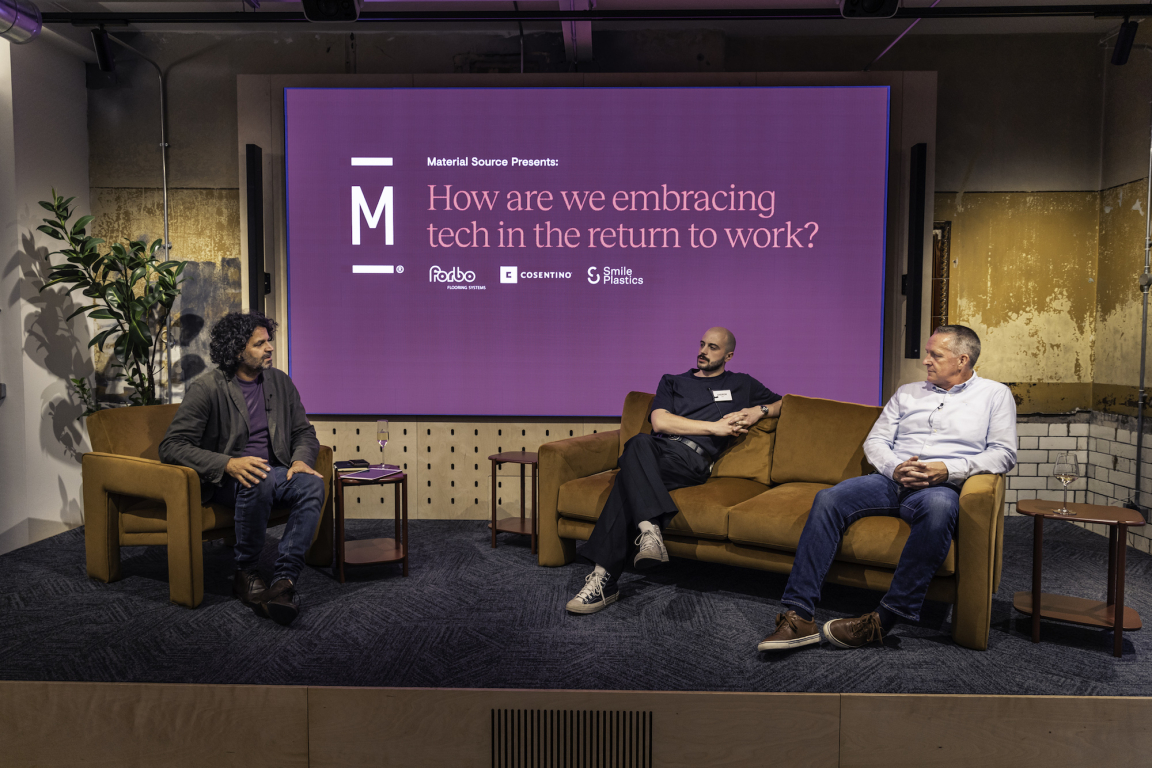
Credit: Tim Ainsworth
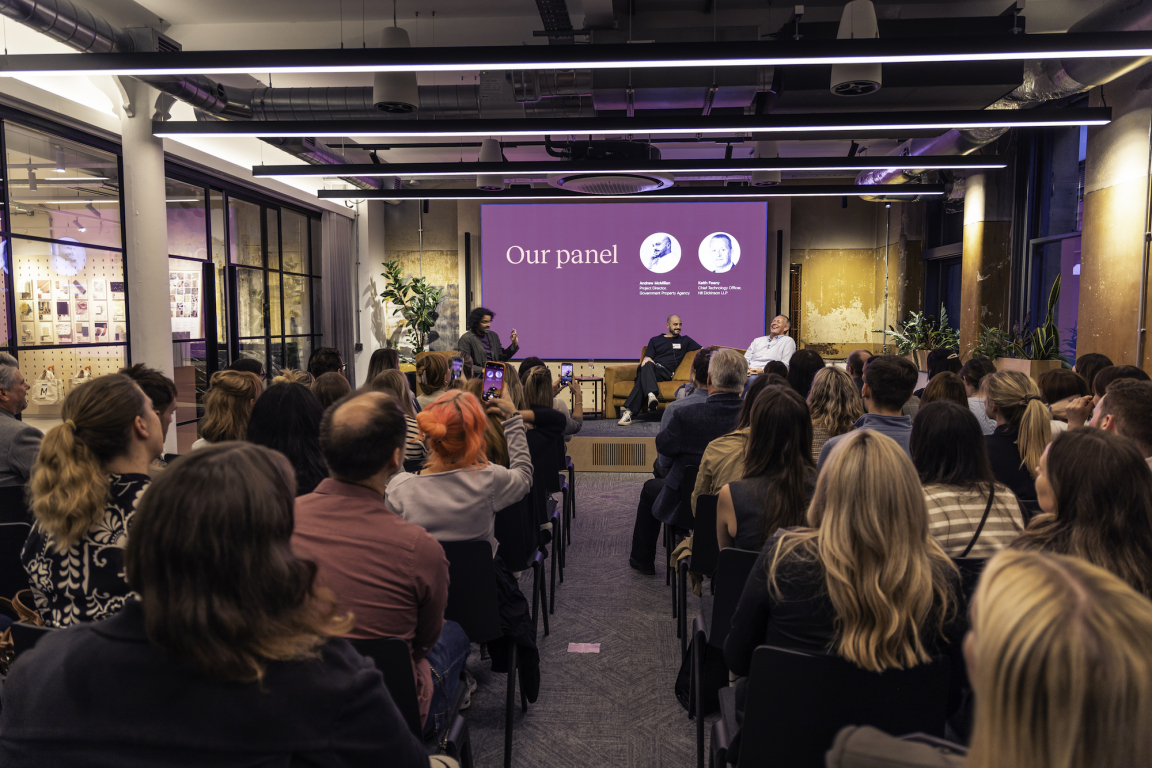
Credit: Tim Ainsworth
Considering the physical
In the built environment, sustainability and data clearly go hand-in-hand, with each enabling the other. Before delving into the data discussion proper, the former theme came up as the physical wraparound to more ethereal, digital tools.
As part of Hill Dickinson’s ESG strategy, Keith explained that for their new bricks and mortar Manchester destination, it wasn’t just a sustainable building that was desired, but “the most sustainable building in the city” - and that’s where St Michael’s came in.
This prompted audience member, Isla Wishart, senior architect, Corstorphine & Wright, to ask Keith, “What does sustainability mean to you? What exactly were you looking for?”
Communicating its intentions as a firm was crucial, Keith said, and accreditations could support with that. “We moved in to a NABERS five star rated building in Leeds, and it made us think beyond BREEAM in terms of how we operate. We have an ESG strategy team – with our own in-house analyst – so it’s important we find buildings that support what we want to do in a wider sense.”
This hasn’t come without its challenges, though, with Keith following up that NABERS brings about difficulties when it comes to equipping a building as a professional services operator. But ultimately, it’s “the right thing to do”.
David threw the question over to Andrew – “sustainability is really important for you isn’t it?”. “Incredibly”, came the response. But the government takes a slightly different angle. “It’s how much juice can you get from the orange? How much return on investment for that asset can you provide? How much can we maintain what’s existing? Especially in terms of carbon. It involves a pragmatic approach to using what we’ve already got.”
Whitehall was used as an example of buildings with encased carbon, which are being improved rather than replaced. “In this case, it’s the only option – to do more with less.”
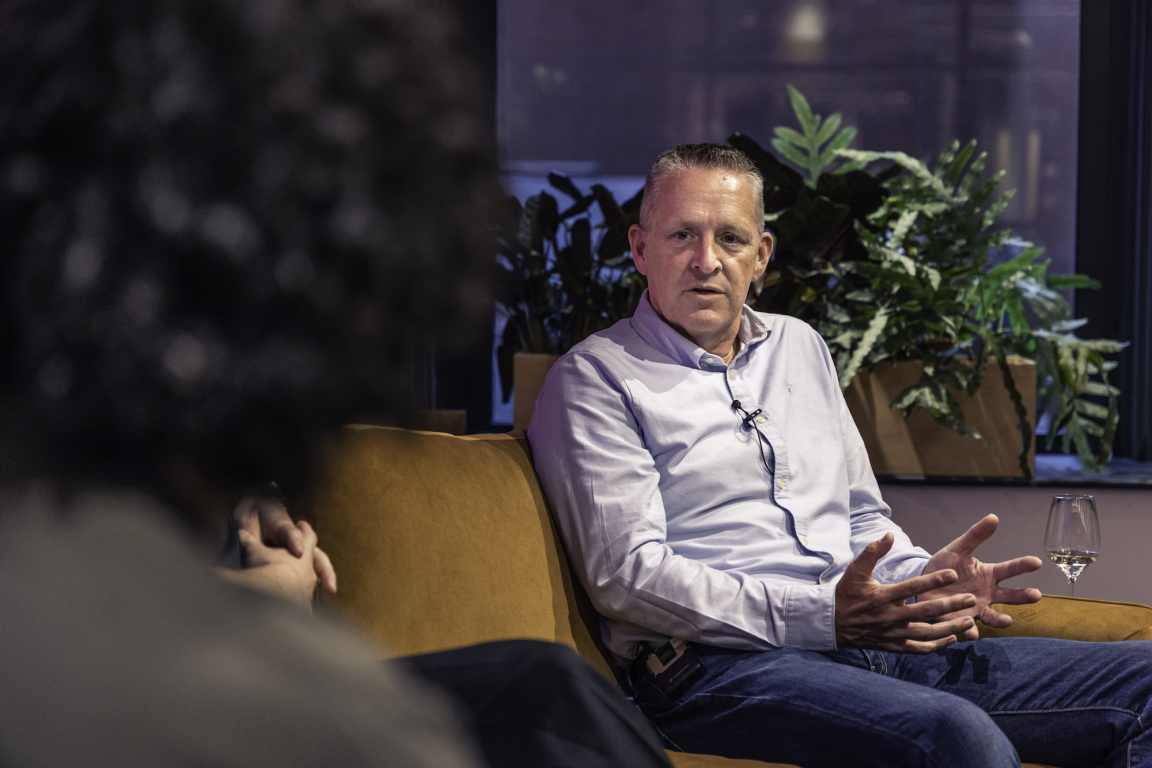
Credit: Tim Ainsworth
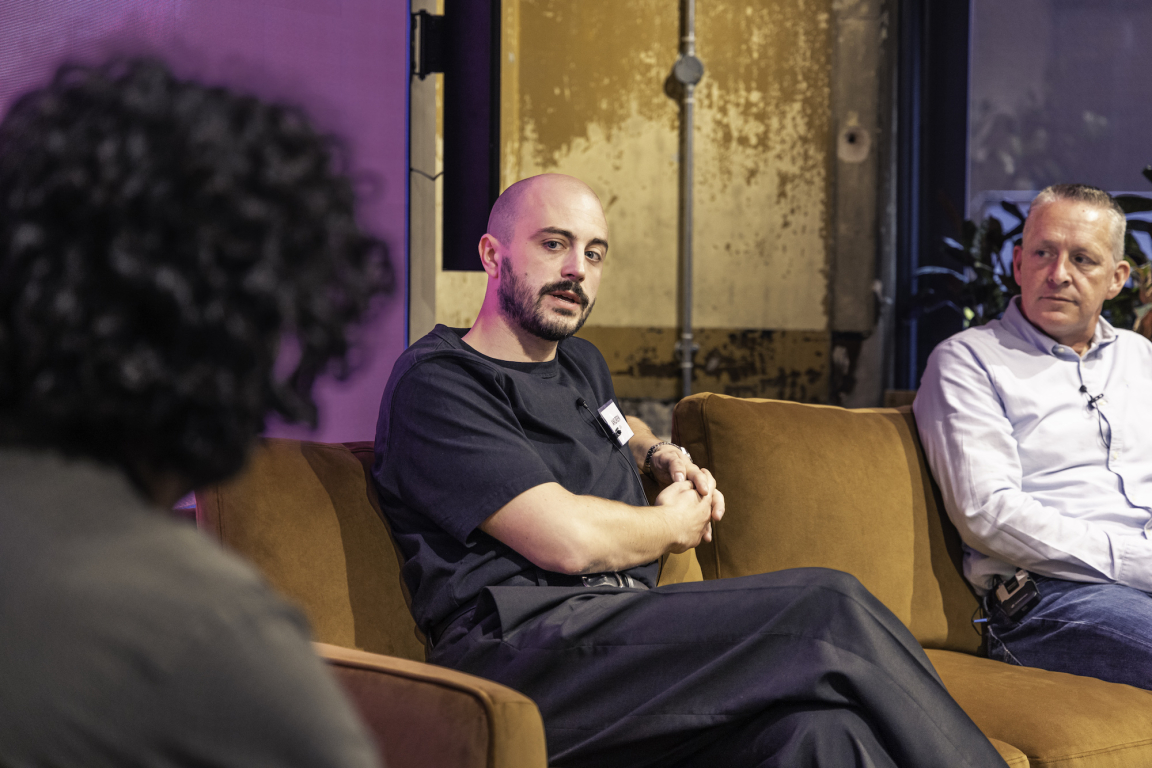
Credit: Tim Ainsworth
Tech – is it smart enough?
Moving the conversation onto digital, David asked, “Since the start of Covid, how far have we come with remote working and collaboration tools?”
“Not very far”, came the reply from Andrew. At Government Property Agency, there are perhaps more restrictions than others face, he suggested, in reference to the different security levels between departments making “universal cohesion” difficult, and the adoption of tools “in its infancy”.
In an ideal world, “how would this be resolved?” David asked. “I’d get everyone on Teams”, Andrew responded “as a start”. “I’d have a piece of work done that validates the need to do this.”
How do we make people feel equal in a hybrid meeting? It’s really difficult - Keith Feeny
Keith believes the tools have moved on. Hill Dickinson uses Teams, and has decided to do away with its data centre in favour of the cloud. Being eight-years into a cohesive collaboration strategy means day-to-day friction has been minimised. Although other difficulties are posed in how to manage the hybrid.
“I’ve heard from peers in other firms that if a meeting has more than five-people in it then it moves to being held on Teams, rather than have some in the room, and some not. That’s always a challenge for us”, Keith explains. “Otherwise, there’s a disconnect. That’s a human thing – not a technology thing.”
At the new St Michael’s office, and across Hill Dickinson’s entire estate, all of the meeting rooms are fitted with dual screens, all rooms have the same set-up, to make the experience as seamless as possible.
“So, is hybrid the only issue?” asked David. Andrew came back with an interesting response, “It’s the most prominently discussed issue – how do people collaborate and communicate. It’s always at the front of the conversation. Technology is one angle, but meeting hygiene is another in terms of how people actually behave. Because of the wider disconnect with online/offline, the negative aspects of meetings have been dialled up.”
On the topic of behaviour, Keith commented that within his teams there is an expectation that team members enable their camera during a video call. But Andrew provided an alternative viewpoint that, actually, for some neurodiverse needs, visual separation by way of someone having their camera turned off can in fact empower them to better engage.
Owen Tracey, senior architect, Halliday Meecham, suggested that perhaps sometimes, Teams meetings can instead be emails – a point that resonated with Andrew. "On our project, I've made it clear to our teams that the only reason someone should create a meeting is to gain consensus, and they should ask themselves if this is needed before the meeting is created. If the answer is no, it doesn't need a meeting; it needs something else." In the past, when work was solely office-based, this may have been a five-minute chat, but with constant requests for “jumping on a Teams call”, Andrew believes boundaries have shifted.
How do we generate and facilitate change though? Archontia Manolakelli, architect and design researcher, AtkinsRealis, asked from the audience, “With all change comes resistance. Other than hybrid, what have been the biggest challenges in getting people back to the office?”
The rapid adoption of technology has cracked the back of neurodiversity - Andrew McMillan
“The way people operate in workspaces is now a conversation we’ve all entered into – as a company, processes must be adapted to allow people to work independently. It’s moved further up the chain.”
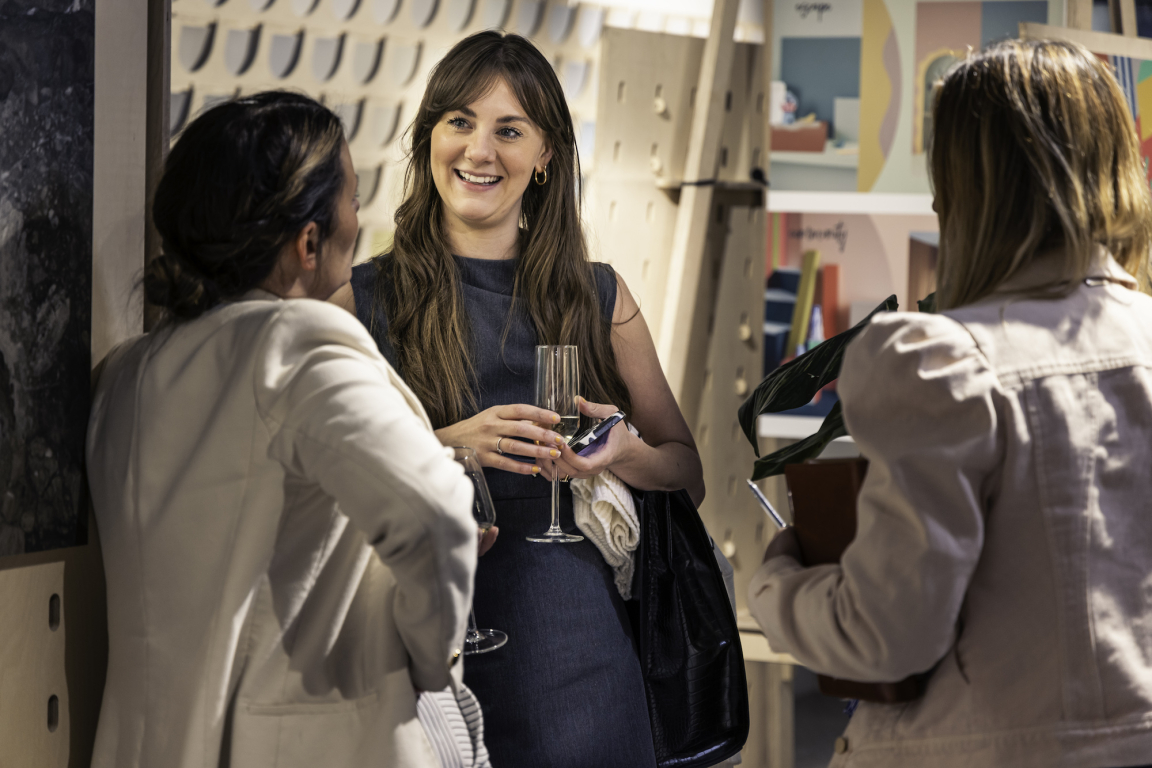
Credit: Tim Ainsworth
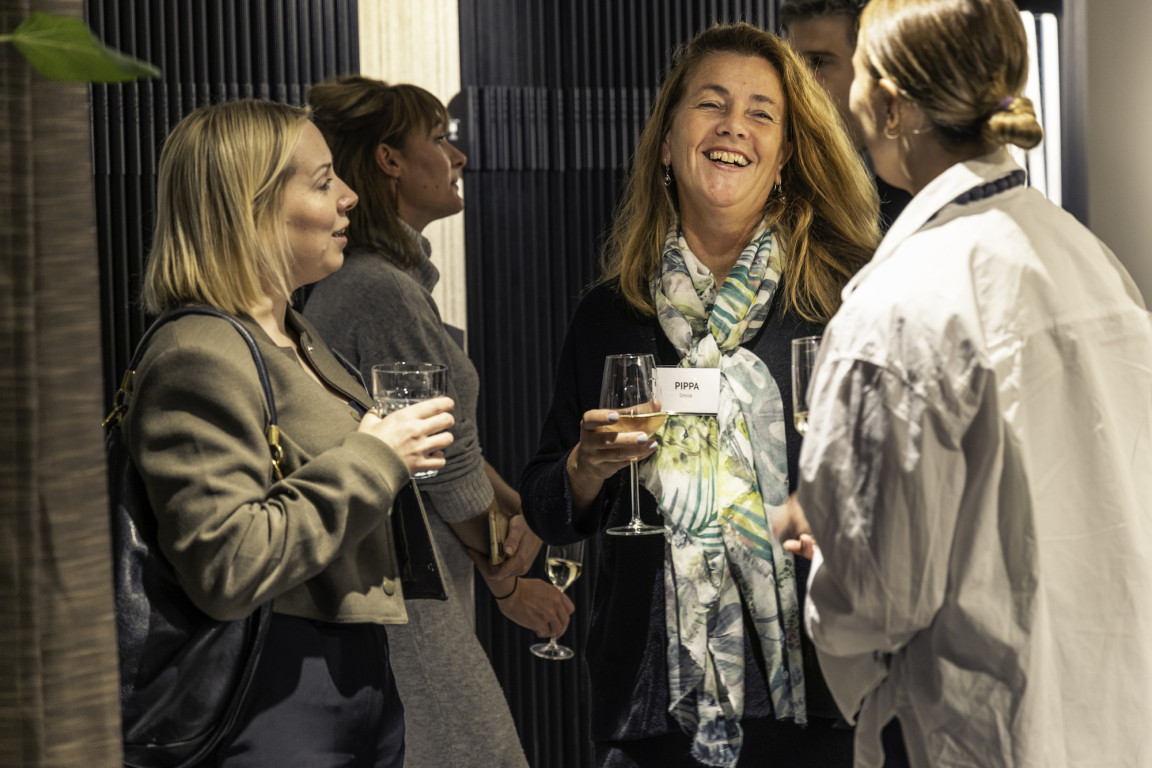
Credit: Tim Ainsworth
Humans – a lack of trust?
Trust was brought up at this point. Reflecting the wider workplace conversations circulating in the media currently in regard to mandating – most recently, Amazon. In the law sector generally, Keith shared that presenteeism can perhaps also still be an issue.
In contrast to this, at the St Michael’s office, Keith’s allowing for less desks than people to offer flex around hybrid. “For the first few weeks everyone might want to be in and sat at a desk, but as we move through, we think this will settle down. We’re obviously making the space attractive to encourage people back, while also allowing for ebb and flow.”
“Is it just a trust issue that’s driving some CEOs to enforce a five-day week back in the office?” David asked.
Andrew commented that it’s likely also down to recouping investment – “you may have signed a lease for 25-years, and you need to demonstrate ROI.”
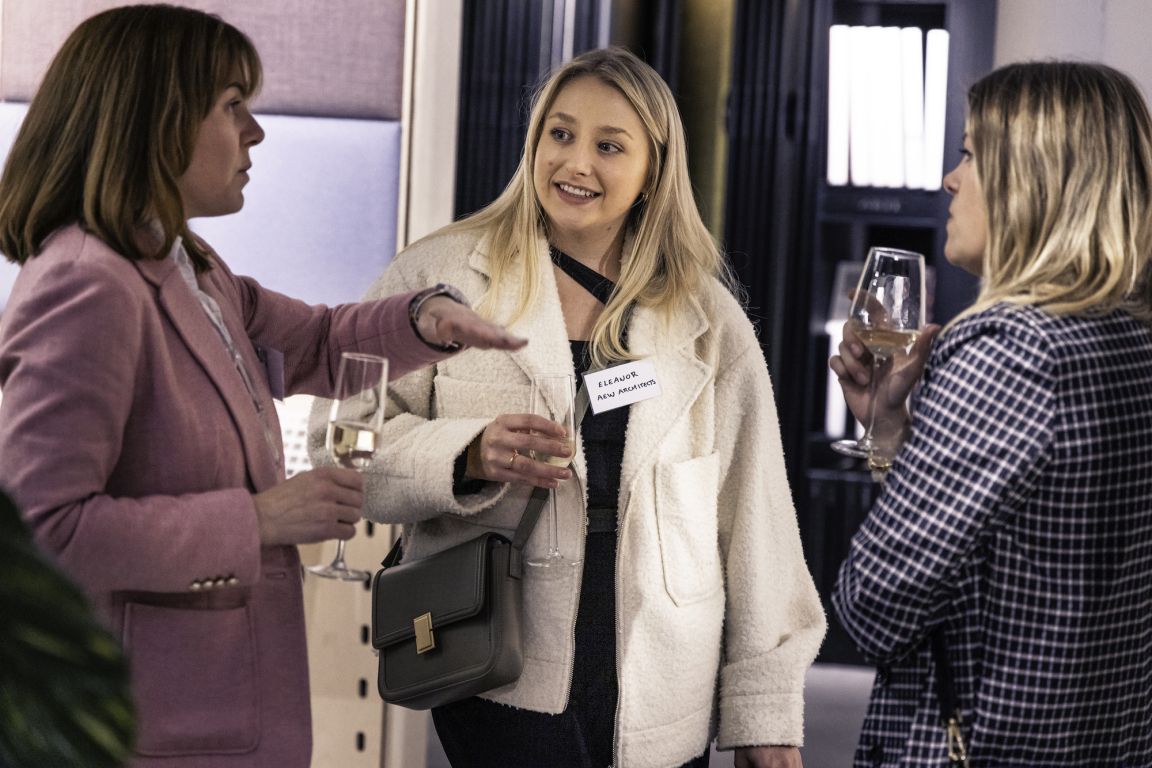
Credit: Tim Ainsworth
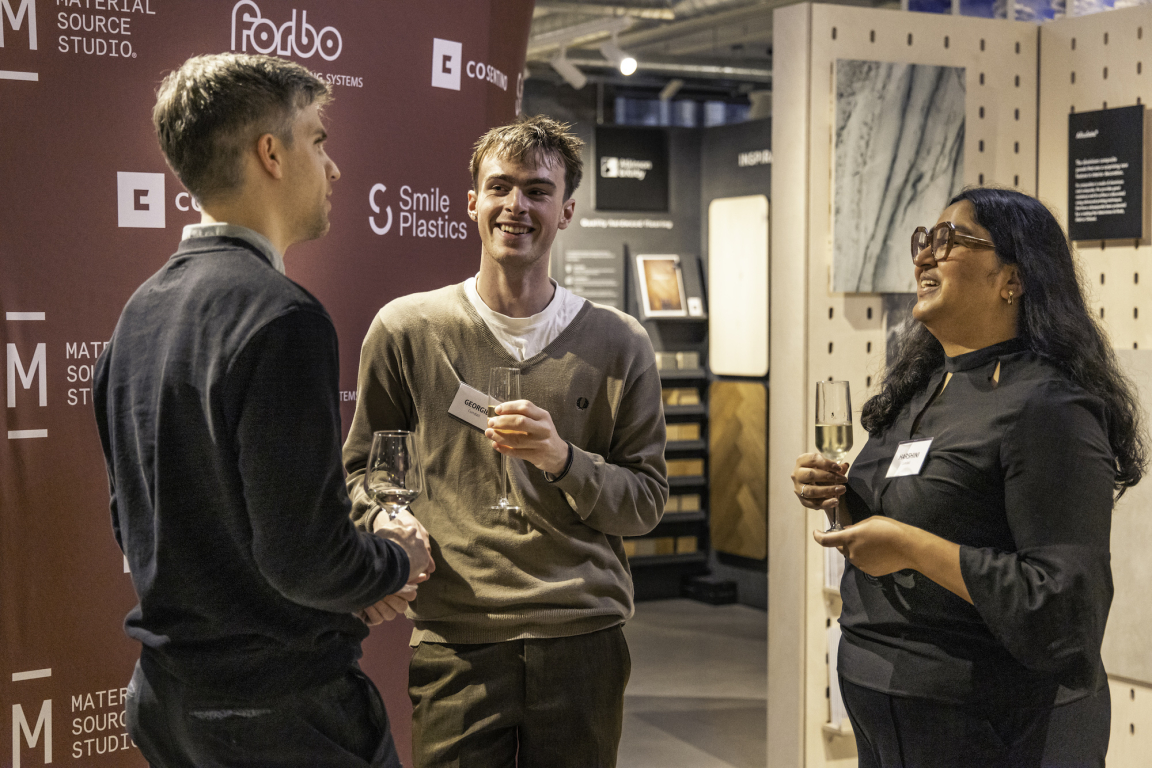
Credit: Tim Ainsworth
AI – friend or foe?
In a conversation about technology, AI was an inevitable topic. David asked, “What’s your policy on AI?”
Andrew replied, “We don’t trust it.
“A language model is something that ingests information and then utilises it to create information for others”, he continued, “And we have no verifiable, maintainable way of managing how this will be used to inform someone else – now or in the future. In government, a localised solution is being explored instead.”
This mistrust of AI is perhaps not a surprise. Picking just one global study - by KPMG – carried out to measure trust in artificial intelligence found that three in five (61%) of those surveyed are wary about trusting AI systems.
It’s for good reason. But it won’t put a stop to its use. Keith commented, “There are well documented instances now where there have been case hallucinations – where AI is quoting case law, which doesn’t exist. Do we pretend lawyers aren’t using it? We know they are. So we’ve tried to evolve a strategy that involves authorisation and supervision, and the output needs to be checked before it goes anywhere near clients.”
Though Keith stated that some of the tools they use have elements of AI built in, and there are specific AI tools within the law sector, an extensive budget would be needed to procure them. There is a reliance on suppliers to evolve this technology, but there’s also thought needed around focusing on the “right” data set - “Garbage in, garbage out, as they say”, Keith added.
“Aside from AI and Teams, then – what will become commonplace in your schemes going forward?” David asked. “Sensors, for example – five-years ago they weren’t that common – are they now?”
Not in the law sector, Keith shared. And for the few that have adopted their use, the implementation of this type of technology has not always proven successful. “Do I want to invest in that kind of technology at the moment? No. There would be no value”, he commented. “We do need a desk booking system though – desks have to be booked. But there are no sensors to check the people that have booked them have actually turned up.”
Andrew differentiates between high- and low-tech implementation in the civil service. With the latter, they can track how many people have logged onto the Wifi to get an understanding of volume in the office. For the former, heatmapping is used to establish the likes of dwell time. “We can generate better data sets to help us understand how people are using space to plan and manage building services. And this generates savings and helps improve sustainability”, he commented.
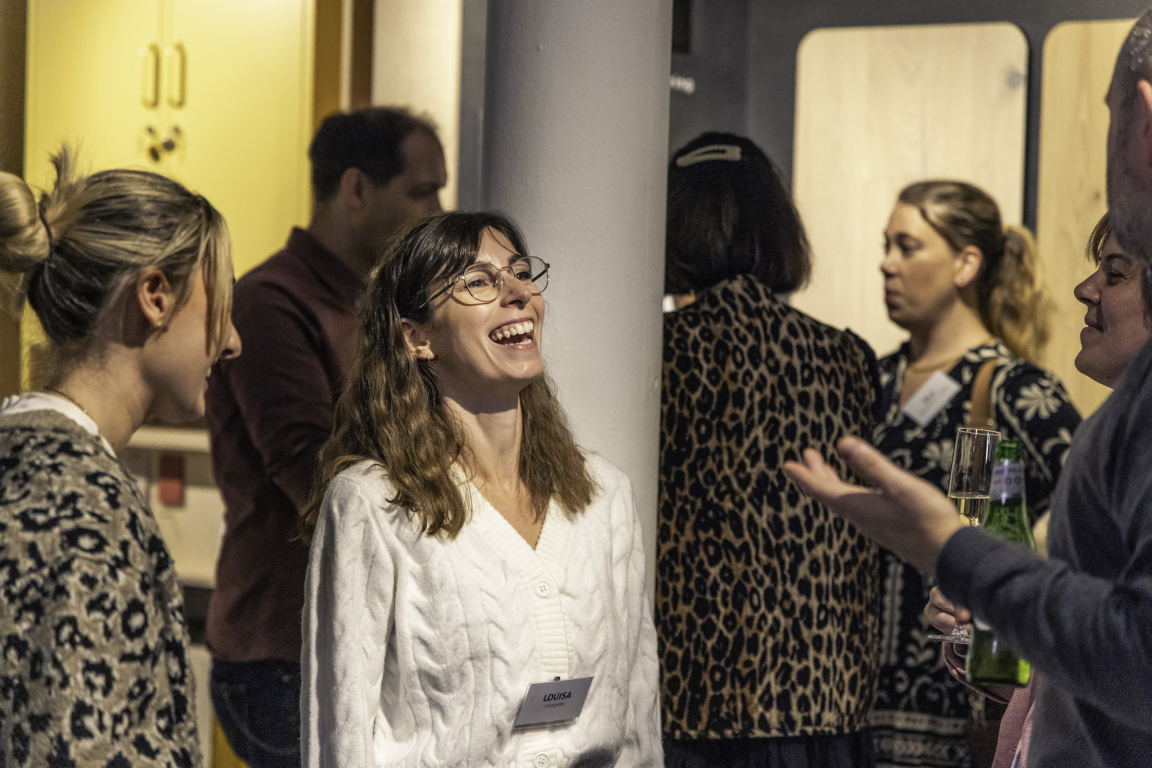
Credit: Tim Ainsworth

Credit: Tim Ainsworth
What’s next?
An audience question came from Emily Skinner, head of market engagement, Smile Plastics, asking what trends have been drawn from analysing this type of data?
“We’re seeing a reliance on desks”, replied Andrew, “and on privacy spaces. And this isn’t because they want quiet space, but they’re on Teams calls. The ‘third space’, people don’t really have the passion to use it – or perhaps it’s the education - they’ve not been taught to use the workspace effectively.”
Keith agreed there is an education piece to be done. And this is something he and his team have worked with Simon Millington on – particularly in the Leeds office. This includes “soft landings” – explaining to the teams how each area works and what it’s been designed to facilitate activity-wise so they know when they need a desk, for example, because it won’t be for every task.
Are there moral implications with tracking? On the fine balance between tracking and ethics, Andrew stressed that it’s ‘a’ human being that’s being tracked - not ‘Gary’. It’s people, not a person.
And bringing the conversation to a close, for now, David asked our panellists to imagine they had a magic wand, to consider what they would create to ensure more technology-driven, space-efficient workplace design?
“Intelligent furniture”, answered Keith, “that could transform to mirror occupancy. It’s what do you need on a particular day for the operation of your organisation. On the day we move into our Manchester office in 2025, I could have more people there than desks. So, what do I do?”
“The pressure’s on you now isn’t it?” replied David, “You have to cut down for various reasons”…
“The fundamental reason is value for money”, said Keith, “we have to sweat our assets.”
If Andrew had a magic wand, he’d “close the loop on data driven design” – because – “data informs better outcomes.”
Huge thanks to our panellists for their insight shared, to our guests, and to our supporters for the evening, Forbo, Cosentino & Smile Plastics.
Hot on the heels of this seminar, we hosted a roundtable, asking: Workplace: How do we understand the data? Our write-up is to follow soon – stay tuned.



